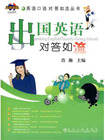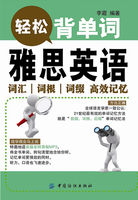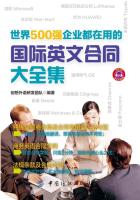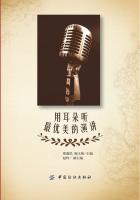买公共汽车路线图
中西文化
公共汽车公司一直在改进市内公共汽车的服务,他们鼓励人们上下班乘公共汽车。在美国休斯敦,为了使通勤者加快速度,公共汽车有自己的公路。在西雅图,公共汽车可以在城市最拥挤地段下面的公共汽车隧道里通行。
典型对话
1.买 地 图 乘 车
A:Excuse me. May I have a map of Beijing?
A:请问,有北京地图卖吗?
B:I'm sorry. We don't have any maps here. You could try one of the newspaper stands.
B:对不起,我们没有卖的,你可以去报摊看看。
A:Thanks.
A:谢谢。
2.买 公 交 线 路 图
A:I want to get on the bus and buy a bus route map.
A:我想乘公共汽车,买张公共汽车路线图。
B:Don't worry. The bus driver will give it to you on the request.
B:别担心,只要和司机要,他就会给你的。
A:Thanks a lot.
A:多谢了。
B:You're welcome.
B:不用谢。
3.买 汽 车 时 刻 表
A:Is there a bus timetable?
A:有汽车时刻表吗?
B:Here you are.
B:给你。
A:And how about a map of this city?
A:有本市地图吗?
B:I'm afraid we don't have any.
B:很遗憾,我们没有。
4.询 问 公 交 车 站 点
A:Excuse me, do the buses stop here?
A:劳驾,公共汽车在这儿停吗?
B:Yes, they all stop at this corner.
B:公共汽车都停在这个拐角处。
A:When's the next No.58 bus?
A:下一辆58路公共汽车何时会来?
B:It will be here in three minutes.
B:3分钟以后会来的。
A:Thanks.
A:多谢。
B:Don't mention it.
B:别客气。
Buying a Bus Ticket买公共汽车票
中西文化
在美国,如果坐市内公共汽车的话,一般有一个标准车费,即对每一个人都是同一个价格。有一个收费机向你收钱,因此不要把钱给司机;另一种方法是买一张月票。
典型对话
1.买 直 达 票
A:How long does it take to go from here to Chicago by bus?
A:从这儿到芝加哥坐公共汽车需要多少时间?
B:About an hour.
B:大约一小时。
A:Do I need to transfer?
A:我要换车吗?
B:No. It goes straight through.
B:不用,是直达的。
A:One ticket, please.
A:请给我一张票。
2.买 票 去 公 园
A:How much is the fare to the National Park?
A:到国家公园的车费要多少?
B:One dollar.
B:一美元。
A:Here you are. One ticket, please.
A:给你。请给我一张票。
3.赶 车
A:What are you waiting for? Get on the bus quickly!
A:你在等什么呢?赶快上车啊!
B:But I didn't buy my ticket.
B:可我还没买票。
A:On the bus. The conductor collects the fares. You have to take your luggage on board.
A:在车上买。售票员收钱。你得把你的行李拿上车。
B:Oh, God. I wish I didn't carry so much. When will the bus leave?
B:天哪,我真希望我没带那么多行李。车什么时候开?
A:In a minute.
A:马上。
B:Thank Goodness. We catch it.
B:谢天谢地。我们赶上了。
4.买 票 去 市 区 (1)
A:Excuse me, sir. Do you have any idea how I can get to the downtown area?
A:请问,先生。你知道怎样去市区吗?
B:I'm afraid it's a long way from here. As far as I know, you have to transfer. However, take bus No.37.
B:恐怕离这儿很远。据我所知,您要转车。不管如何,您要先乘37路车。
A:Could you please tell me where can I find the bus stop?
A:你能告诉我哪里有公共汽车站台?
B:Walk down this road, and turn left at the first traffic light. It is just in front of you.
B:沿着路直走,在第一个交通灯处左转。公车站就在你前面。
A:Thanks so much.
A:非常感谢。
5.买 票 去 市 区 (2)
A:Do you know whether Bus No. 43 passes this way?
A:你知道43路车经过这儿吗?
B:Yes.
B:是的。
A:Was the bus just gone by No. 43?
A:刚才开走的那辆车是43路吗?
B:No, it was No.237.
B:不是,是237路。
A:How long do you have to wait for a No. 43?
A:乘43路车要等多久?
B:Let me see. It should not be very long. Bus No. 43 runs every 30 minutes. The last No.43 has gone for quite a long time. It's coming soon.
B:让我看一下。应该不要很久。43路车每30分一趟,上一辆43路车已经走了很久了。马上要来了。
A:Thanks. I'm a stranger here. It takes me time to get to know the town. By the way, is Bus No.43 going to the downtown area?
A:谢谢。 我是新来的。熟悉这里的情况还要花些时间。顺便问一下,43路是去市区吗?
B:Yes, I think so. But you could ask the driver. Look! No. 43 is coming.
B:我想是的。但你可以问一下司机。看!43路来了。
On the Bus在车上
中西文化
乘公车要带上零钱,因为司机不为你找零。上车时把钱投放在司机身旁的一个小箱里。美国的司机不是每站都停的。因此,如果你要下车,你得拉一下侧面窗户上的绳子示意司机。
在美国一些地方坐车,几乎感觉不到拥挤,这是怎么回事呢?原来公交公司对乘客的乘车峰值做了研究, 设计出符合实际乘车状况的班次。星期六、星期天安排的车比平时的车少一些,因为这是美国人休息的日子,若购物的话,他们一般开车去。什么时候人多,班次就加密;人少的时候,班次就减少。
典型对话
1.车 上 吸 烟
A:Is it all right to smoke on the bus?
A:在公共汽车上可以吸烟吗?
B:Sure. But only in the smoking area. It is in the rear.
B:当然可以。不过只能在吸烟区。在车的后面。
A:I see. Thanks.
A:明白了。谢谢。
B:You are welcome.
B:不客气。
2.到 站 下 车
A:Which station should I get off?
A:我应该在哪站下车?
B:You should get off at Renming Road.
B:你应该在人民路下。
A:How long is the ride?
A:要坐多久?
B:Well, you will get there in about an hour if the traffic is not too heavy. Drop two yuan in the box, please.
B:如果交通不拥挤的话,一个小时就到了。请投币两元。
A:OK. Would you please let me know when we get to the stop?
A:好的。到站请叫我一声好吗?
B:Sure.
B:可以。
3.路 线 方 向 坐 错
A:All fares, please.
A:各位乘客请买票。
B:One ticket to the Science Museum, please.
B:一张去科学馆的票。
A:I'm afraid you are going in the wrong direction, sir.
A:先生,您恐怕坐错方向了。
B:Oh, my goodness.
B:噢,真倒霉。
A:Get off at the next stop and change to the Bus No.25 , and get off at the Chunri Stop,then you can see the Museum on your left hand.
A:下一站下车,换乘25路车,然后到春日站下车,博物馆就在你左手边。
B:Take the number 25 bus. Get off at the Chunri Stop.
B:乘25路车,然后在春日站下车。
A:That's right.
A:是的。
4.乘 车 去 公 园
A:Welcome to the number 20 bus.
A:欢迎乘坐20路公共汽车。
B:How much is the fare?
B:请问车票多少钱?
A:A quarter, please.
A:25美分。
B:Here you are.
B:给您。
A:Thanks. Just put it in the box.
A:谢谢。请投进这个箱子里就行了。
B:I see. Could you tell me how I can get to the Lincoln Park?
B:明白了。请问怎样去林肯公园?
A:You are right to have boarded o
n my bus. But you need a transfer at the King Stop. I'll put you off when we get there. Then you can catch the number 227 bus. There is one stop called Lincoln Street. Lincoln Park is near the stop.
A:您乘上我的车就对了。但是您得在国王站换乘另一趟车。到那里时我会叫您下车的。您要换乘227车。有一站叫林肯路。林肯公园就在林肯路旁边。
B:Thanks a lot.
B:非常感谢。
5.车 上 检 票
A:I want to get off at the next stop.
A:我想在下一站下车。
B:I am afraid the next stop is not the post office.
B:恐怕下一站不是邮局。
A:Isn't it ? Please let me know when we get there.
A:不是吗? 那到邮局时请告诉我。
B:All right. I will remind you when we get there. But please show me your ticket.
B:好。到那里时我会提醒你的。请让我看一下你的票。
A:Here you are.
A:给您。
6.到 站 提 醒 (1)
A:Let's move to the rear of the bus. We will get off at the back door. Oh, before we go to the rear, we have to get an add a fare from the driver for the No. 12 at Big Avenue.
A:我们移到后车厢去吧。我们在后车门下车。噢,在移到后面之前我们得向司机买一张在比格大街换乘12路车的追加票。
B:OK.
B:好的。
A:Driver, could you let us know when we arrive at Big Avenue?
A:司机,到比格大街时请您告诉我们一声好吗?
C:Sure thing, sir.
C:当然可以,先生。
A:You're very kind.
A:您太好了。
B:In fact, we just pull the buzzer which is stung across the bus above the window. Otherwise the driver will go right past the stop if he finds no one is waiting at the stop.
B:其实我们拉一下车窗上面和蜂音器连着的绳子就可以了。否则,司机看到站上没人等车的话就直接开过去了。
7.到 站 提 醒 (2)
A:Excuse me, driver. Does this bus go to the Golden Theater?
A:打搅一下,司机。这辆车开往金色剧院吗?
B:Yes, you may get off at Happy Avenue.
B:是的,您在欢乐大街下车就可以了。
A:How long is this ride?
A:路程有多远?
B:Well, if the traffic is not heavy, you may get there in about 15 minutes.
B:如果交通不拥挤的话,15分钟就到了。
A:Thanks. And how much is the fare?
A:谢谢。车费多少钱?
B:Drop fifty cents in the box please.
B:请放50美分到盒子里。
A:OK. Would you please let me know when we get there? I am a newer here.
A:好的。您能告诉我什么时候到站吗?我是新来的。
B:Sure. I'll remind you, Miss.
B:当然。我会提醒你的,小姐。
A:Thanks a lot.
A:非常感谢。
8.询 问 票 价
A:Is this the bus that goes by the park?
A:这班公共汽车经过公园吗?
B:No, it isn't. But you can transfer from this bus to bus number 24 when we get to the 1st Street.
B:不经过。但是你可以搭这班车到第一街转乘24路汽车到达那里。
A:Good. How much is the fare?
A:好,那么车费多少钱?
B:It's eighty cents for adults and thirty five cents for children under twelve. Don't use bill, and drop the exact fares into the money box after getting on the bus.
B:大人八十美分,十二岁以下的小孩三十五美分。不要用纸币,上车之后把钱数整好的硬币投入收款箱中。
A:Will it cost for the transfer?
A:转车要钱吗?
B:Yes. When you get on the transfer bus, just show the bus driver the ticket stub. You will only have to pay ten more cents for yourself and a nickel for your child.
B:要。当你上了转乘的公共汽车时,就把这张票根给司机看。你只需另外再付十美分,而你的孩子只需再付五美分。
A:It's good.
A:不错。
B:You can take a seat now. And when you're ready to get off, remember to press the button near your seat.
B:现在你找个座位坐下吧。当你要下车的时候别忘了按你座位旁的按钮。
A:Then how far ahead of time do I need to ring the bell for you to stop the bus?
A:我应提前多久按铃请你停车呢?
B:One minute is OK.
B:提前一分钟就可以了。
9.索 要 转 车 票
A:What's the fare, please?
A:请问车费是多少?
B:A dollar.
B:一美元。
A:Is this the right bus for the Town Hall?
A:这是去市政厅的车吗?
B:Yes, it is, only you are in the opposite direction.
B:是的,不过你坐反了。
A:Oh, my! Could I have transfer, please?
A:啊哟,那能否给我一张转车票呢?
B:Yes, here you are.
B:可以,给你。
A:Thanks.
A:谢谢。
Taking a Wrong Bus搭错车
中西文化
坐公共汽车是每个人都有的经历,相信不少人有坐错车或坐过头的窘事。在此再次提醒您:上车前一定要先看清车站牌(bus stop)上的指示以及公交车编号(bus number),可别迷迷糊糊坐上去了,才发现坐错车了。
典型对话
1.搭 车 反 向 (1)
A:Is this bus to Central Park?
A:这是去中央公园的车吗?
B:I'm afraid not. It's in the opposite position.
B:恐怕不是。这车是开向反方向的。
A:Oh, my god!
A:噢,天哪!
B:I suggest that you get off at the next stop and ask the way there.
B:我建议你在下一站下车,再在那里问路。
A:Thanks.
A:谢谢。
2.搭 车 反 向 (2)
A:I'm sorry for being late.
A:对不起,我迟到了。
B:That's all right. I just wondered whether it was the traffic problem.
B:没关系。我刚才在想是不是交通问题。
A:No, the traffic is not crowded. But I took the wrong bus. It took me to the opposite position.
A:不是,交通不拥挤。但是我坐错车了。我去了相反的方向。
B:Oh, I'm sorry to hear that.
B:哦,真倒霉。
3.搭 错 公 交 车 线 路 (1)
A:Excuse me, sir, but aren't you supposed to stop at the train station at the last traffic light?
A:对不起,司机,你不是应该在上一个交通灯那儿的火车站那里停吗?
B:No, sir. We go straight ahead.
B:不是的,先生。我们直走。
A:Is this the bus to train station?
A:这辆车不到火车站吗?
B:No, that's Line 15.We are Line 16.
B:不到,到火车站的是15路,我们是16路。
4.搭 错 公 交 车 线 路 (2)
A:No, I take the wrong bus. Please let me off here!
A:不,我乘错车了。请让我下车。
B:Oh, sorry, Sir. I'm afraid I couldn't do that now. You can get off at the next stop.
B:噢,对不起,先生。恐怕我现在不能那样做。你可以在下一站下车。
A:Could you tell me where can I catch the bus to the airport?
A:你能告诉我在哪里可以坐车去机场?
B:You can take the airport bus at the next stop. The bus comes every 30 minutes. It's Line 30.
B:你可以在下一站坐机场巴士。每30分钟一趟。是30路汽车。
A:How long will it take to get to the airport?
A:到机场得多久?
B:It takes 30 minutes.
B:需要30分钟。
A:Thanks.
A:谢谢。
5. 询 问 正 确 线 路
A:Does this bus go to the Yanji Hotel?
A:这路公共汽车去延吉宾馆吗?
B:No, you're going the wrong way, you want that No.936 bus from the Yucai School.
B:不去,你坐错车了,你应到育才学校那边乘936路公共汽车。
A:Can you tell me where to get off?
A:请告诉我在哪儿下车?
B:It's four stops after this one. It's quite away yet, but I'll tell you in good time.
B:过了这一站还有4站。还远着呢,到了我会及时告诉你的。
A Sightseeing Bus游览车
中西文化
如果外出旅行,却苦于没有周详的计划时,可以去当地的旅行社咨询热门的旅行线路,他们的观光车可以带你去各个旅游景点。这样你就不用为出行的交通烦恼了。
典型对话
1.参 观 故 宫
A:Yes, sir. May I help you?
A:先生,我能效劳吗?
B:I'm interested in a tour.
B:我想去旅行?
A:Is there anything special you want to see?
A:你有什么专门要参观的吗?
B:I'm interested in seeing the Imperial Palace.
B:我想参观故宫。
A:All right. Let me give you some brochures. We have three basic tours.
A:好的。让我给你一些小册子。我们有三条主要旅游线。
B:Does the morning tour visit the Imperial Palace?
B:上午旅游线路里参观故宫吗?
A:No, sir. That's in the all day tour.
A:不参观,先生。只有全天旅游线路里参观。
B:Then, I'd better take the all day tour.
B:那我报全天旅游。
A:That's a tour of all the most famous places.
A:那是一条包含所有著名景点的线路。
B:Fine. Please reserve me a seat for this Saturday.
B:好的。请给我订一张周六的位置。
2.在 车 上 小 睡
A:Hey, our sightseeing bus is going really fast!
A:嘿,我们的观光车开得真快!
B:Yes, look at the highway outside. It goes at least 60 miles an hour.
B:是的,看外面的高速公路。至少每小时开了60英里。
A:I've been looking for traffic lights, but there don't seem to be any.
A:我一直在找红绿灯,但一个都没有看到。
B:It is a good quality highway. It has 8 lanes.
B:这条高速公路的质量真不错。有8车道。
A:Yes. You see the barrier area in the middle of the highway is also very wide; the information signs are large enough to be seen from far away. Moreover, our bus is also very comfortable. I will take a nap before I climb the Great Wall.
A:是的。你看中间的隔离带很宽,信息牌也很醒目,很远就能清楚地看见。而且,我们的观光车也很舒服。我要在爬长城之前小睡一下。
B:Go ahead. I'd like to enjoy the view outside the window.
B:睡吧。我欣赏窗外的风景。
3.车 上 找 座
A:I couldn't find my reserved seat. Could you help me find my seat?
A:我找不到我的预定座了。你能帮我找到我的预定座吗?
B:Please show me your ticket. Well, here it is. Your reserved seat is No. 9, near that window.
B:请让我看一下您的票。噢,这儿, 您的预定座是9号座,靠那扇窗。
A:Thanks.
A:谢谢。
B:You are welcome.
B:不客气。















